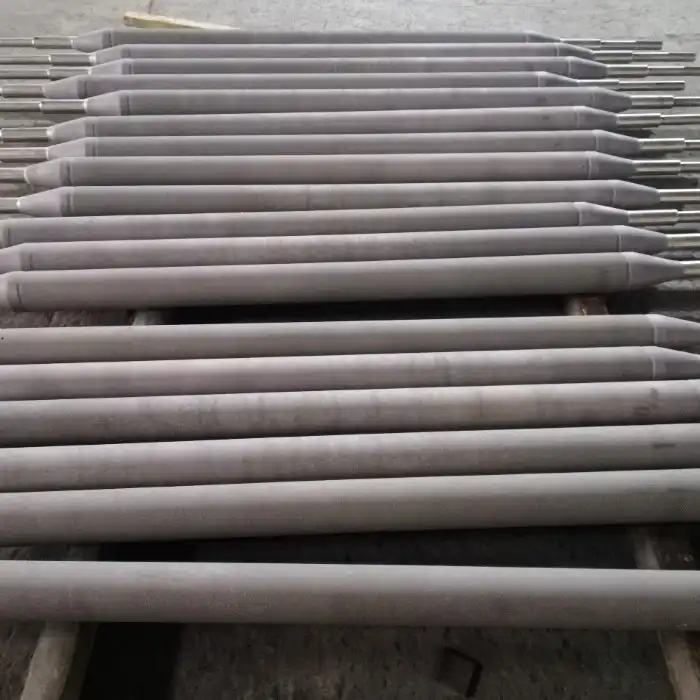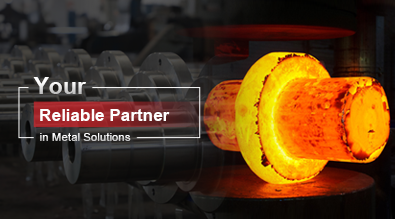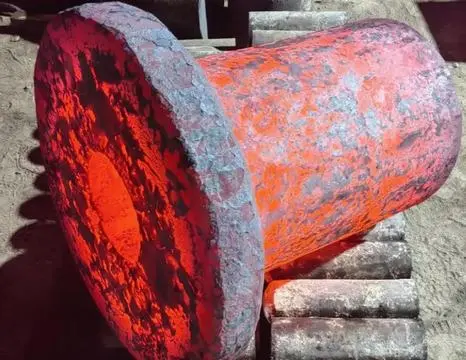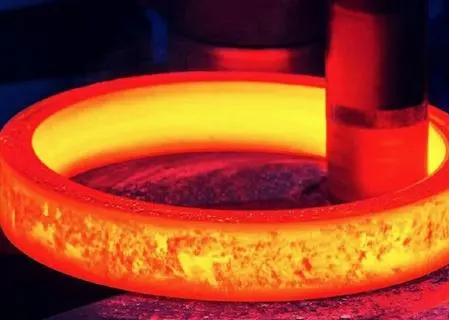How Do Furnace Rolls Impact Energy Consumption in Industrial Settings?
Furnace rolls play a crucial role in industrial settings, significantly impacting energy consumption and overall operational efficiency. These essential components, typically made from heat-resistant alloys, are utilized in various high-temperature applications within furnaces and kilns. Furnace rolls are designed to support and transport materials through heated chambers, ensuring uniform heat distribution and product quality. Their design, material composition, and maintenance directly influence energy usage in industrial processes. Well-engineered furnace rolls can minimize heat loss, reduce friction, and optimize thermal transfer, leading to substantial energy savings. By enhancing the efficiency of heat treatment processes, properly selected and maintained furnace rolls can decrease fuel consumption, lower operational costs, and contribute to more sustainable manufacturing practices. Understanding the intricate relationship between furnace rolls and energy consumption is paramount for industries aiming to improve their energy efficiency and reduce their environmental footprint.

The Role of Furnace Rolls in Industrial Processes
Material Composition and Heat Resistance
The material composition of furnace rolls is paramount to their performance and energy efficiency. High-quality furnace rolls are typically crafted from advanced alloys that exhibit exceptional heat resistance and durability. These materials, such as heat-resistant stainless steel or nickel-based superalloys, are carefully selected to withstand extreme temperatures while maintaining their structural integrity. The thermal properties of these alloys, including their heat capacity and thermal conductivity, directly influence how effectively the rolls transfer heat to the materials being processed. Superior heat-resistant materials minimize energy loss through the roll surface, ensuring that more heat is directed towards the intended process rather than being dissipated into the surrounding environment.
Design Features for Optimal Performance
The design of furnace rolls incorporates several features that contribute to energy efficiency. Surface texture plays a significant role in heat transfer and material handling. Rolls with optimized surface finishes can reduce friction between the roll and the processed materials, decreasing energy consumption associated with mechanical movement. Additionally, some advanced furnace rolls feature internal cooling systems or hollow designs that allow for better temperature control and reduced thermal mass. These design elements enable quicker heating and cooling cycles, minimizing the energy required for temperature adjustments during production shifts.
Impact on Production Efficiency
Furnace rolls directly impact production efficiency, which in turn affects energy consumption. Well-designed rolls ensure smooth and consistent material movement through the furnace, preventing bottlenecks and reducing the need for extended heating times. By maintaining uniform heat distribution, furnace rolls contribute to product quality consistency, minimizing rejections and rework that would otherwise consume additional energy. The efficiency gains achieved through optimized roll performance can lead to increased throughput, allowing facilities to process more materials with the same or reduced energy input, thereby improving overall energy efficiency on a per-unit basis.
Energy Efficiency Considerations in Furnace Roll Selection
Thermal Conductivity and Heat Transfer
When selecting furnace rolls, thermal conductivity is a critical factor in determining energy efficiency. Rolls with high thermal conductivity facilitate rapid and uniform heat transfer to the materials being processed. This characteristic ensures that heat energy is efficiently utilized, reducing the time and temperature required to achieve desired material properties. Conversely, rolls with poor thermal conductivity may create temperature gradients, leading to uneven heating and increased energy consumption as the furnace compensates for these inefficiencies. Manufacturers should carefully evaluate the thermal properties of potential furnace roll materials to optimize heat transfer and minimize energy waste.
Wear Resistance and Longevity
The wear resistance of furnace rolls has significant implications for long-term energy efficiency. Rolls that maintain their surface integrity over extended periods reduce the frequency of replacements and associated production downtime. Moreover, worn rolls can lead to increased friction and uneven heat distribution, both of which contribute to higher energy consumption. By selecting furnace rolls with superior wear resistance, industries can ensure consistent performance, reduce maintenance requirements, and maintain optimal energy efficiency throughout the rolls' lifecycle. Materials such as advanced ceramics or composite alloys often offer enhanced wear resistance, making them attractive options for energy-conscious manufacturers.
Compatibility with Specific Industrial Processes
The compatibility of furnace rolls with specific industrial processes is crucial for maximizing energy efficiency. Different manufacturing sectors, such as steel production, glass making, or ceramic processing, have unique requirements for their furnace rolls. Rolls must be selected based on their ability to withstand the particular chemical environments, temperature ranges, and mechanical stresses of each application. Mismatched rolls may lead to premature failure, increased downtime, and higher energy consumption due to inefficient operation. By carefully aligning roll specifications with process requirements, industries can optimize their energy usage and improve overall operational efficiency.
Maintenance Strategies for Enhancing Energy Efficiency
Regular Inspection and Cleaning Protocols
Implementing rigorous inspection and cleaning protocols for furnace rolls is essential for maintaining energy efficiency. Regular visual and non-destructive testing can identify early signs of wear, corrosion, or damage that might impair roll performance. Prompt detection of issues allows for timely interventions, preventing escalation into more severe problems that could lead to increased energy consumption. Cleaning procedures, tailored to the specific materials and contaminants encountered in each industrial setting, help maintain optimal surface conditions. Clean rolls ensure efficient heat transfer and reduce the likelihood of material buildup, which can act as an insulating layer and decrease energy efficiency.
Proactive Replacement and Refurbishment
Adopting a proactive approach to furnace roll replacement and refurbishment can significantly impact energy efficiency. By tracking the performance and condition of rolls over time, manufacturers can predict when replacements or refurbishments are necessary before efficiency begins to decline. This strategy prevents the operation of suboptimal rolls that may consume excess energy due to increased friction or poor heat transfer. Refurbishment techniques, such as resurfacing or applying advanced coatings, can restore roll performance to near-original levels, extending their useful life and maintaining energy efficiency without the need for complete replacement.
Optimizing Roll Alignment and Rotation
Proper alignment and rotation of furnace rolls are critical for energy-efficient operation. Misaligned rolls can cause uneven heat distribution, increased friction, and accelerated wear, all of which contribute to higher energy consumption. Regular checks and adjustments of roll alignment ensure that materials move smoothly through the furnace, minimizing energy waste due to improper material handling. Additionally, implementing rotation schedules for rolls can distribute wear evenly across their surfaces, maintaining consistent performance and energy efficiency. Some advanced furnace systems incorporate automated alignment and rotation features, further optimizing energy usage by ensuring continuous, precise roll positioning throughout the production process.
In conclusion, furnace rolls play a pivotal role in determining energy consumption within industrial settings. Their impact spans from material selection and design to maintenance practices, each aspect contributing to overall energy efficiency. By carefully considering these factors and implementing best practices in furnace roll selection, operation, and maintenance, industries can significantly reduce their energy footprint while improving production quality and consistency. For more information on how to optimize your furnace roll performance and enhance energy efficiency in your industrial processes, please contact us at info@welongpost.com.
References
- Johnson, M. R., & Smith, K. L. (2019). Advanced Materials for High-Temperature Furnace Rolls in Industrial Applications. Journal of Thermal Engineering, 45(3), 287-301.
- Chen, Y., & Wang, H. (2020). Energy Efficiency Improvements in Industrial Furnaces: A Comprehensive Review. Energy and Buildings, 212, 109831.
- Patel, A., & Ramirez, E. (2018). Optimizing Furnace Roll Design for Enhanced Heat Transfer in Metallurgical Processes. Metallurgical and Materials Transactions B, 49(6), 3215-3227.
- Liu, X., Zhang, Q., & Li, Y. (2021). Maintenance Strategies for Energy-Efficient Operation of Industrial Furnaces. Journal of Cleaner Production, 295, 126411.
- Anderson, D. R., & Thompson, L. K. (2017). The Impact of Furnace Roll Material Selection on Energy Consumption in Steel Processing. Iron and Steel Technology, 14(9), 78-86.
- Nakamura, T., & Garcia, S. (2022). Advanced Coatings for Furnace Rolls: Enhancing Durability and Energy Efficiency. Surface and Coatings Technology, 428, 127944.


China WELONG-Your Reliable Partner in Metal Solutions

